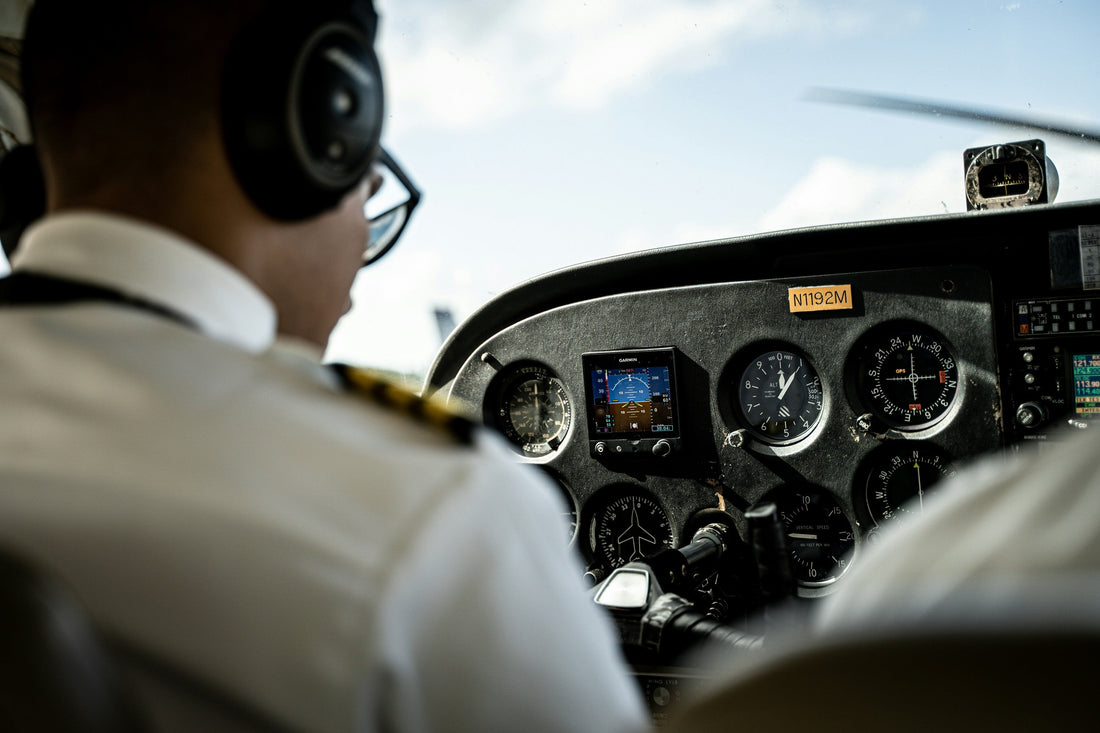
Preflight Checklist: What Every Pilot Needs to Review Before Takeoff
By Leslie Caubble, CFI/IGI
Preflight checklists are a key component for safe flying. Pilots observe checklist use and learn their importance starting at the first flight lesson. Checklist use is an element that pilots are tested on during checkrides at every level of training. Following a checklist helps make sure that procedures for safe flight, aircraft operation, and emergencies are followed.
Preflight Checklist Basics
Preflight actions are important to the safety of flight. Following a checklist not only helps a pilot remember the tasks but also verifies that the checks are made in the correct order. Preflight can seem like a mundane, repetitive task. However, it’s the nature of the repetition that helps the pilot notice if something is abnormal with the aircraft.
Errors in preflight have led to many aircraft accidents through the years. Some examples of basic preflight checks that were skipped that have led to accidents include:
- Checking fuel quantity and quality
- Verifying fuel caps are secure
- Removing the tow bar
- Ensuring flight controls are free and correct
- Skipping the pilot self-assessment
- Failing to get a complete weather briefing
Flying is risky, and pilots learn how to mitigate the risks through a thorough preflight check. The FAA offers a great risk management checklist that we are encouraged to use before each flight: PAVE. The PAVE checklist divides the risk of flight into four categories: Pilot, Aircraft, Environment, and External Pressures. Each of these categories contains other preflight checklists that pilots can follow, and these are simple and easy-to-remember ways that risks can be examined during preflight.
P = PILOT
Pilots need to do a self-assessment before each flight to evaluate his/her fitness for flight. A pilot’s physical, mental, and emotional state is just as critical as any aircraft component.
Many studies have shown that fatigue, over-the-counter medications, and chronic stress cause lapses in judgment and deterioration of quick decision-making. It’s vital that we take an honest look at our capacity for pilot-in-command responsibilities before each flight.
The easiest way to perform a self-assessment is by using the IMSAFE checklist. Let’s walk through it!
I: ILLNESS
Do I have any symptoms that will affect my ability to make a safe flight?
M: MEDICATION
Have I taken a prescription or over-the-counter drug?
S: STRESS
Am I feeling pressured with the job or mission? Am I experiencing any life stresses (financial, relationships, life events) that could distract me?
A: ALCOHOL
Am I within the legal limits of alcohol consumption? Am I under the lingering influence of alcohol, even if I’m “legal?”
F: FATIGUE
Did I get enough rest last night? Do I feel tired?
E: EMOTIONS/EXTERNAL PRESSURES
Do I feel upset, angry, unusually sad, or frustrated?
Some of these questions that we ask ourselves as pilots are subjective, and it’s best to look at your overall picture of health to mitigate the risk. Maybe you didn’t sleep very well last night, but you’re feeling fine in the other categories. Maybe you’re flying with another pilot, and the weather conditions are great. It’s possible you could decide that you can make the flight safely.
A = AIRCRAFT
Part of the preflight process is confirming your aircraft is safe and airworthy for the flight. Not only are we making checks on equipment and systems, but we’re also confirming our proficiency to fly the airplane. Another part of this category is evaluating the performance of the aircraft for weight and balance, takeoff, landing, cruise, and fuel burn.
Before you start checking for the correct operation of the systems, you need to verify that the airplane is airworthy. Here are a few preflight checklists and memory aids to get you started:
Every aircraft is required to have certain documents on board to deem it legal and airworthy to fly. We use the ARROW checklist as a memory aid for these:
A: Airworthiness Certificate
R: Registration Certificate
R: Radio Station License (only required for international flights)
O: Operating Limitations (such as POH, flight manuals, weight and balance limits)
W: Weight and Balance Data
There are required inspections that an aircraft must undergo to be airworthy. If the inspection hasn’t been performed and signed off by the proper maintenance technician within the required timeframe, the airplane isn’t allowed to fly. Before flying, a pilot must verify these inspections have been performed by looking in the maintenance logs.
A: ANNUAL INSPECTION
V: VOR CHECK (if flying under IFR)
1: 100-HOUR INSPECTION (if for hire/compensation, such as flight training)
A: ALTIMETER & STATIC SYSTEM INSPECTION (if flying under IFR)
T: TRANSPONER INSPECTION
E: EMERGENCY LOCATOR TRANSMITTER (ELT) INSPECTION
If you’re not sure how to look up these inspections, ask your flight instructor or mechanic to show you. You’ll need to show these inspection endorsements to the examiner at your checkride.
V = enVironment
The major environmental component during a preflight check is getting a thorough weather briefing. Weather can change dramatically between airports, and you need to verify the weather at your departure airport, destination airport, and en route.
Here are some potential environmental hazards or concerns that should be addressed during preflight:
Weather: At a minimum, get a standard weather briefing. Is the weather within your personal minimums?
Airspace: Check NOTAMs, TFRs, and survival equipment.
Night Operations: Special considerations and extra precautions should be made if flying at night.
Terrain: Be familiar with potential obstacles, terrain, emergency landing options, and considerations if flying over open water.
Passengers: Passengers will always cause a distraction at some point, so remind yourself to stay vigilant.
E = EXTERNAL PRESSURES
External pressures are factors or situations that pressure a pilot to complete the flight. Some examples are: flying to a special event, carrying a client to an important meeting, wanting to show off your pilot skills, and pushing yourself to get to your destination despite deteriorating conditions.
External pressures are dangerous because they can cause a pilot to ignore many of the other preflight checklist items. Pilots can mitigate the risk of external pressures by always having a “Plan B” and encouraging passengers to do the same. Even in flight, these considerations are constantly evaluated. The FAA encourages use of the 5-P’s checklist to constantly evaluate and mitigate the hazards you might encounter during the flight:
PLAN
Cross-country flight planning, route, fuel, and weather.
PLANE
Proficiency in the use of the plane’s systems & avionics and familiarity with the plane’s handling and operating limitations.
PILOT
Mitigating the physiological hazards of the pilot and self-checking for any hazardous attitudes or sense of pressure to fly.
PASSENGERS
Do my passengers have an urgent desire to reach the destination? Do they have a backup plan in place if the flight cannot proceed?
PROGRAMMING
The pilot’s reminder is to check installed and personal equipment, equipment proficiency, and planning for airport information and approaches.
These are some basic checklists that every pilot needs to utilize during the preflight process. There are many factors that go into a safe and successful flight. These preflight checklists make the process smoother and easier to remember. Safe flying!
By Leslie Caubble, CFI/IGI
Northstar Aviation References brings you the Pre-Tabbed ASA FAR/AIM, DIY tabs for your FAR/AIM and other pilot resources so that you can more easily study the regulations that form the foundation of your flying career or hobby. Have any questions? Check out our FAQs page or contact us. Check out other blog posts here.
